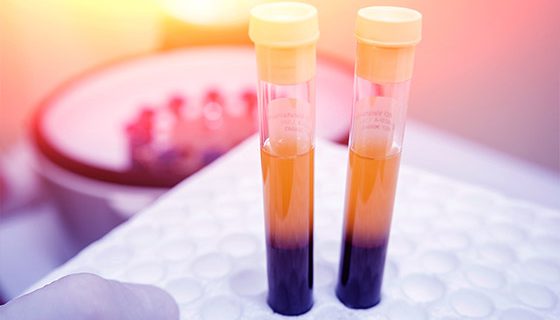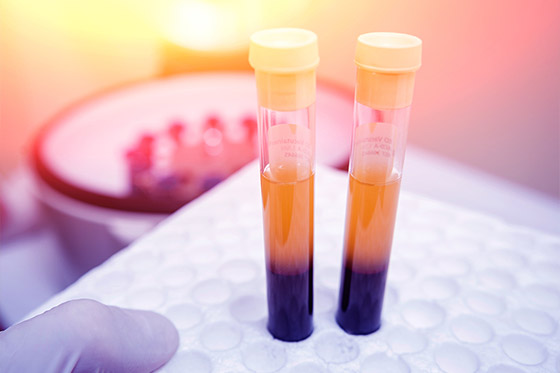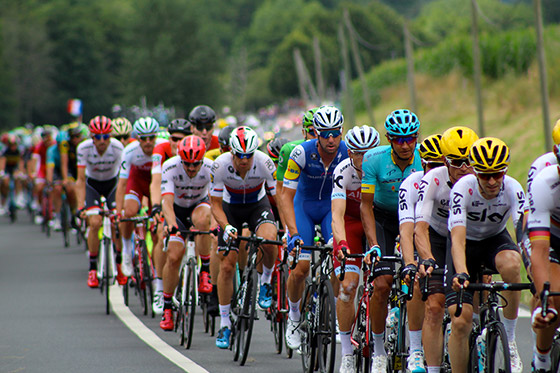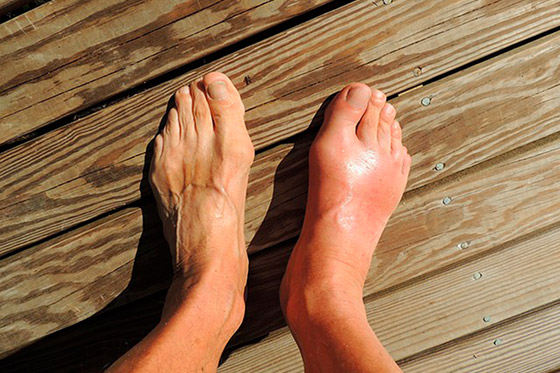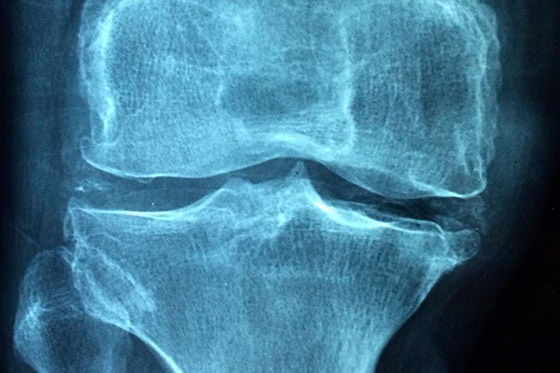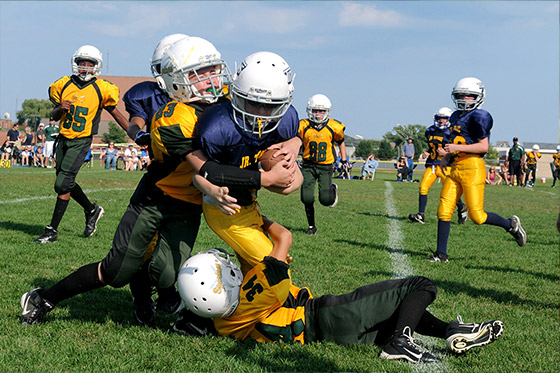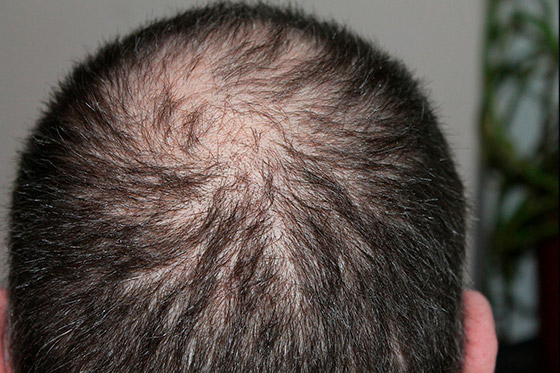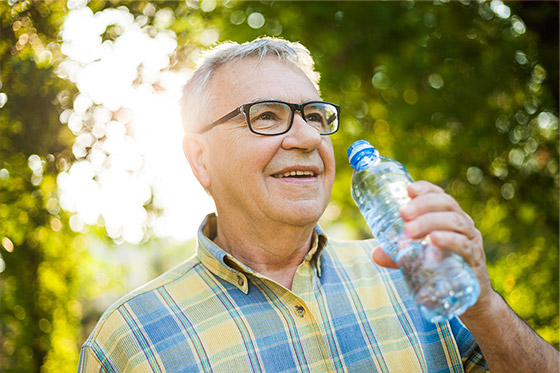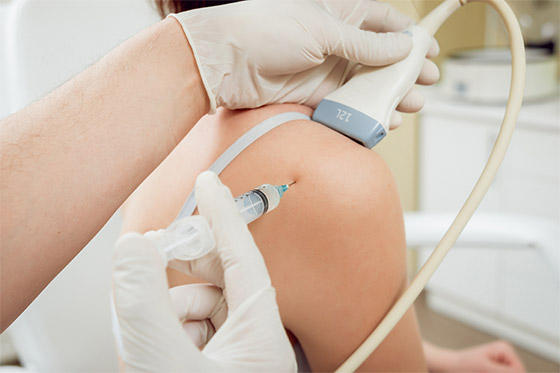What is PRP?
Platelet-rich plasma, (PRP) is a 100% safe, cutting-edge therapy commonly used to treat many types of injuries or degenerative diseases. PRP contains a concentration of powerful growth factors extracted from your own blood. Your body uses these growth factors to repair injured and degenerated tissues. When used by the skilled physicians at Oregon Regenerative Medicine, PRP is a viable alternative to surgery and an effective treatment of the causes of chronic pain.
Since 2008, Dr. Noel Peterson has been a well-known researcher and pioneer in the use of PRP, frequently lecturing on prolotherapy and training physicians all over North and South America in the harvesting and use of PRP derived growth factors. While many physicians utilize PRP, only a small minority have the skills and training to properly diagnose and skillfully treat the multitude of conditions that PRP can help.
While many patients and physicians are just learning about PRP, it has been effectively used for decades in many fields of medicine including sports medicine, dentistry, orthopedics, neurosurgery, ophthalmology, ENT (ear, nose, throat), and even cosmetic surgery. At ORM, we have pioneered many uses for PRP-derived growth factors, including dry eye syndrome, aesthetic skin restoration, hair loss, female sexual dysfunction and bladder leakage, interstitial cystitis, post-concussion syndrome and other degenerative neurological conditions.
Quick links to PRP topics
Red and white blood cells in PRP?
Is PRP only for elite athletes?
Conditions that PRP injections can help
Reasons patients love their choice to get PRP treatment
It’s easy to qualify for PRP therapy
How we turn your blood into platelet-rich plasma ready for injection
Preparing for your PRP appointment
The PRP injection frequency required for effective outcomes
Are there side effects of PRP treatment?
Recovery time for PRP injections
PRP stands for platelet rich plasma. The normal platelet count in human blood is 150,000- 350,000/microliter. PRP is defined as one million platelets per microliter in a small volume of plasma with a full complement of clotting factors.
There are seven key growth factors in PRP: platelet-derived growth factors (PDGFaa, PDGFbb, PDGFab), transforming growth factors (TGF-b1, TGFb2), vascular endothelial growth factor (VEGF), and epithelial growth factor (EGF). Cellular mitogenesis and angiogenesis are both upregulated by PRP, making it especially useful in orthopedic injuries, osteoarthritis, hair rejuvination, and facial rejuvenation.
PRP works through a process of degranulation of platelet alpha granules, which contain the growth factors. It is ideal to collect PRP in an anticoagulated state for the growth factors to remain active, which explains the need to draw the blood into a tube containing sodium citrate. The biologically active cellular components such as the growth factors are preserved within the platelet when the platelet is held in an inactive state.
Upon activation of the platelet, the granules then fuse to the injured cell membranes, activating the secretory growth factors, which bind to the transmembrane receptors of target cells, such as mesenchymal stem cells, fibroblasts, endothelial cells, and epidermal cells. This binding activates intracellular signal proteins that express a gene sequence directing cellular proliferation, collagen synthesis, extracellular matrix formation, and numerous other pathways to promote healing and repair processes.
Not all PRP is created equal.
For over 20 years, Oregon Regenerative Medicine has been the only NW clinic to analyze every patient’s Platelet Rich Plasma in our laboratory so that we can provide optimum concentrations of growth and repair factors.
There are many conflicting reports in the literature about the efficacy of PRP. This is because if the PRP is not properly prepared, there will be no biologic effect. As the use of PRP has grown, so has the demand for, and availability of, PRP–concentrating machines and methods. But not all of these methods produce biologically active PRP.
The basic differences among these various methods are:
- the amount of concentration of platelets (how many times it’s concentrated above a person’s normal (baseline) levels; and
- the presence of red or white blood cells, and concentrations of growth factors.
Most studies support a platelet concentration of four to six times a patient’s normal level for musculoskeletal injuries. This translates to an ideal platelet concentration of 1.0 million to 1.5 million platelets per microliter. This concentration stimulates robust tissue regeneration when compared to lower platelet concentrations.
The success of your PRP treatment is only as good as your physician’s skills and the quality of your PRP concentrate. Because of this, we customize the platelet concentration to best match your condition. Dr. Noel Peterson has been a well-known researcher and pioneer in the use of PRP, frequently lecturing on prolotherapy and training physicians all over North and South America in the harvesting and use of PRP derived growth factors. While many physicians utilize PRP, only a small minority have the skills and training to properly diagnose and skillfully treat the multitude of conditions that PRP can help.
Stay informed, go with the most skilled and dedicated team in the Pacific Northwest: Oregon Regenerative Medicine!
Back to top
Red and white blood cells in PRP?
Experts have many opinions on whether PRP should or should not be processed to remove red and/or white blood cells.
Whole blood is 94% red cells as compared to less than 5% red cells in PRP, and our technology allows us the ability to remove most of the red cells while still maintaining high platelet counts.
White blood cells are known as leukocytes and constitute only about 1% of whole blood. But in PRP, leukocytes can be concentrated twenty times that amount. At high levels, white blood cells (leukocytes) can actually cause inflammation when injected, causing a prolonged and painful recovery.
In our lab, white blood cells (leukocytes) can be separated from platelets, thus avoiding post-injection flare-ups. There are situations where high white blood cells (leukocyte) concentrations are desirable for repair, and in these circumstances, we are able to enrich your PRP with them.
Is PRP only for elite athletes?
PRP is commonly used by world-renowned athletes to heal faster so they can stay in the game. Athletes who have used it include Tennis star Rafael Nadal, Takashi Saito (Dodgers), Tiger Woods, Brandon Roy (Trailblazers), Hines Ward (Pittsburgh Steelers), and many others.
Patients often have excellent results resulting in healed injuries, surgeries avoided, pain relieved, better ranges of motion, and many other benefits.
PRP for skin and hair
Over the last decade, PRP has also been found to be an effective and safe treatment for thinning hair, increasing collagen in skin, treating wrinkles, and other aesthetic conditions.
Back to topConditions that PRP injections can help
PRP has made the headlines worldwide. Some of the ways we successfully use it include:
Sprains, Strains, Tears & Overuse
- Sports injuries
- Overuse injuries to joints including ankles, knees, hips, and shoulders
- Overuse injuries of muscle tendons and ligaments
- Carpal tunnel syndrome
- Tennis elbow (lateral epicondylitis)
- Golfer’s elbow (medial epicondylitis)
- AC sprains
- MCL injuries
- Hamstring tears
- UCL injuries
- Calf tears
- Achilles tears
- Knee ligament tears
- Shin splints
- Partial thickness rotator cuff tears
- Old injuries that never healed properly
- Quadriceps tendinopathy
- Patellar tendinitis or tendinopathy
- Achilles tendonitis
- IT band syndrome
- Recovery from orthopedic surgeries
Degenerative Diseases
- Knee arthritis
- Shoulder arthritis
- Elbow arthritis
- Spine arthritis
- Hip arthritis
- Degenerative disc disease
- Degenerative tendon disease
- Degenerative joint disease
Chronic Pain
- Chronic wounds that won’t heal
- Persistent neck, mid-back, and low back pain
- Chronic shoulder pain
- Pain associated with degenerative disc disease of the spine
- Plantar fasciitis
- Hip bursitis (greater trochanter pain syndrome)
- Morton’s neuroma
Brain Recovery
- Traumatic brain injuries
- Acquired brain injuries (stroke, Parkinson’s, Alzheimer’s, and other brain diseases that cause inflammation)
- Brain inflammation
Cosmetic Rejuvenation
- Treating hair loss (male pattern hair loss – a.k.a. androgenic alopecia, the growth of thinning hair, hair loss prevention, transplanted hair growth, wound healing, etc.)
- Treating acne scars
- Reducing forehead wrinkles
- Reducing wrinkles between the brow (a.k.a. the number 11 sign or glabellar lines)
- Diminishing laugh line wrinkles where the skin folds on the side of the nose and corner of your mouth (a.k.a. nasolabial folds or smile lines)
- Reducing the marionette lines (those wrinkles that go from the corners of your mouth to your chin)
- Helping to eliminate lines or wrinkles under your eyes (a.k.a. periorbital lines or crow’s feet)
- Making your lips look more full and luscious (a.k.a. filling out vertical lip lines or lipstick lines)
Hair loss: Published research and our own experience have demonstrated that PRP injections are effective in promoting hair growth and preventing hair loss, as well as treating male pattern baldness (aka androgenic alopecia).
Tendon & ligament injuries: Painful chronic tendon problems like tendonitis, tennis elbow, jumper’s knee, ligament sprains, Achilles tendonitis, knee or shoulder pain, are often treated successfully by PRP therapy. Tendons and ligaments tend to be very slow to heal after injury, partially because they don’t get a lot of blood flow to them. But our patients find that these injections can make all the difference.
Acute injuries: If healing quickly after a sports injury sounds good, PRP injections are the name of the game here too. Pulled hamstrings, knee sprains, ankle sprains, back and neck injuries, fractures and broken bones, and even brain injuries are effectively helped by specialized platelet-rich plasma therapies.
Recovery from surgery: Platelet-rich plasma injections can be used after orthopedic surgery to help speed up recovery. It can also be used after tendon or ligament surgery (like for faster recovery from rotator cuff tendon surgery, ACL surgery, etc.).
Plantar Fasciitis: PRP has been found by some to be much more effective long-term than cortisone in severe chronic plantar fasciitis.
Osteoarthritis of the knee, hip, shoulder, and spine: While most surgeons believe there’s no cure for joint degeneration, if you talk with our patients, you’ll discover that they experience tremendous relief from osteoarthritis pain when they undergo platelet-rich plasma therapy and/or adipose tissue graft therapy at our clinic. It turns out that even worn out cartilage (meaning bone-on-bone) conditions in joints still can respond remarkably well to PRP therapy, allowing a fantastic range of motion and avoidance of joint replacement surgeries.
How PRP works
PRP uses a special part of your own blood to stimulate healing at the site of damaged tissue or joints.
When your body receives an injury, one of the first things it does is to deliver platelet cells to the site. These blood plasma platelets are packed with growth and healing properties that begin the repair process as well as attracting stem cells to the area to aid in recovery.
Platelet-rich plasma therapy works directly with this natural healing system of the body but intensifies it considerably so that you end up with an even higher concentration of reparative growth factors in the affected area. By injecting more growth factors and healing platelets directly where you need them, you can enjoy a much stronger healing response.
In spite of the fact that over 14,000 PRP studies have been published and are accessible on PubMed, it has not yet been officially approved as a treatment by the US Food and Drug Administration. Our patients undergoing platelet-rich plasma therapy sing praises of the results they experience from this natural, highly effective regenerative treatment.
Reasons patients love their choice to get PRP treatment
- It’s extremely effective
- There’s minimal downtime (if any)
- It holds a very low risk of negative complications or systemic effects
- Has a very short recovery time
- Requires no surgery or implants, so the results look (and are) natural
- Offers longer lasting results
- Accelerates and enhances your body’s natural healing process
- Greatly reduces trauma and inflammation
- Is highly cost-effective
Back to topIt’s easy to qualify
PRP works for almost any individual. However, if you have any of these conditions, we’ll want to take a more careful look at your health before recommending PRP treatment to you.
- Abnormal platelet function (blood disorder)
- Recent use of corticosteroids (not likely a deal-breaker, but might need a little time space from their use so that the PRP therapy will be more effective)
- Recent cancer or chemotherapy
- Skin disease
- Chronic or acute infection
- Fever
- Blood clotting disorder
- Sepsis
- Anticoagulation therapies
- Severe metabolic and/or system disorder
- Chronic liver issues
How we turn your blood into platelet-rich plasma ready for injection
A vial of your blood is carefully drawn and concentrated in our laboratory within a few minutes. This process concentrates the platelets and growth factors for your treatment.
Because your own blood is used, this procedure carries no risk of transmissible infections and a very low risk of allergic side-effects.
Preparing for your PRP appointment
Platelet-rich plasma therapy is an outpatient procedure and actually doesn’t require much preparation. However, here are a few things that might be recommended to you by your doctor.
- Drink lots of water. Being well hydrated allows your veins to be fuller making the blood draw portion of your appointment much easier and quicker. That means less time poking you with a needle, and less time with the needle in your arm. Win!
- Come early. Coming in early to your appointment allows us to draw your blood and prepare it for the therapeutic injections without your appointment running late. It also allows a little extra time in case we run into an issue somewhere so we can stay on schedule.
- If your appointment will include some topical numbing to the area to be treated, arriving early can also give time for this to be applied and activated so you’re ready for your treatment. (Sometimes, instead of topical numbing, a local anesthetic is mixed with the PRP to reduce discomfort.)
- Anti-inflammatories can reduce the effectiveness of your injection, so it may be recommended to you to not take these types of drugs for one week prior to your procedure. Alternative pain relief drugs like Tylenol may be acceptable during this time. Ask your doctor. Anti-inflammatories include drugs such as Advil, Motrin, Aleve, aspirin, and ibuprofen (see a list of other popular over-the-counter and prescription anti-inflammatory drugs here)
- If you are getting PRP injections for hair growth treatments, then you might have some specific instructions from your doctor on how to prepare for those–such as how to wash your hair prior, etc.
The PRP injection process
Here’s what you could expect from a typical PRP injection process:
- One of our thoughtful healthcare professionals will draw some of your blood. The amount drawn depends on where the PRP will be injected.
- The sealed blood vial is then placed into a centrifuge. This machine spins around very quickly, causing your blood components to separate and takes about 15 minutes.
- One of our experienced staff then takes the separated plasma from the vial containing your blood, separates the red and white cells out of the sample, and further concentrates the platelets with additional centrifuging. They then prepare it for injection into the affected area.
- You’ll find that a doctor will often use imaging, such as ultrasound, to see the specific areas for injection and then use this imaging as a guide, your doctor will then inject the platelet-rich plasma into the affected area.
The entire process usually takes about 45 minutes to an hour, depending on what your particular treatment requires.
The injection frequency required for effective PRP outcomes
The frequency of your PRP injections will depend on a number of factors. Those include the following:
- The condition being treated. With hair loss treatments you might find you just need one or two treatments, where a degenerative joint may require a few more.
- The platelet concentration being used. Some use 5-6x concentration. Others use less. If less is used, you may need more treatments.
- Your body’s health. Since PRP uses factors from your own blood, if your body is healthier, you’ll likely experience a quicker response.
- How often you get follow up with your doctor. Follow up is actually pretty important and can save you from needing more injections in many cases.
Here are a few ideas of how many PRP treatments some conditions generally require:
Sports injuries: This depends on the injury site and severity. For example, most, rotator cuff tears will require 4-6 treatments over several months.
Osteoarthritis: 4-6 treatments
Brain injury: After assessment and baseline testing, we prepare a platelet-rich lysate that can be administered daily in the comfort of your home. Brain injuries are complex and take several months to respond completely.
Wrinkle reduction: This depends on the degree of skin damage that has already occurred. Each treatment will improve the texture and tone of your skin.
Hair loss: typically, you’ll need at least 3-4 sessions spaced out about 4 weeks apart. After the first 4 sessions, your doctor might ask that you get a follow-up treatment again in 6-12 months. These follow-up sessions can help maintain the positive effects you experienced from the initial treatments.
How much does PRP cost?
In our experience, we’ve found that very few insurance plans will provide any reimbursement for PRP injections. This means that these costs must largely be paid out-of-pocket. However, the relief that PRP can bring is often well worth the investment.
At ORM, we understand that PRP must be cost-effective, and since our clinic does not have insurance billing overhead, we pass these savings on to our clients. And since many of our patients have multiple areas of injury, we combine treatments to lower the cost. For example, while a single knee treatment with PRP may cost around $600, treating the other knee at the same time will only raise the cost to $700. Contact us for more details about our multi-area treatments.
PRP costs can vary from city to city and on how the injections are used. Some of the reported costs nationwide include the following:
- Real Self magazine reported that a platelet-rich plasma facelift can cost $1125 on average.
- ABC News 7 in San Francisco reported in 2013 that PRP treatments for hair loss cost $900 for one treatment and $2,500 for a set of three treatments.
- The Washington Post reported in 2014 that knee injections of PRP might cost anywhere from $500 to $1,200 per treatment across the nation. The costs vary widely
While thousands of published studies support it’s use in a wide range of treatments, most insurance companies consider PRP to be an experimental treatment and exclude coverage, regardless of the beneficial outcomes to patients..
Are there side effects of PRP treatment?
PRP is a 100% safe treatment used worldwide. There are no known systemic side effects, although it’s pretty normal to have a little pain, bruising, or swelling at the injection site.
Because the platelet-rich plasma used in your PRP therapy comes directly from your own blood, rejection or allergic-reaction is virtually not possible. And since nothing foreign is being injected into your body, even the risk of infection is highly remote. The beauty of this treatment is that it injects the specific part of your blood into your injury site that battles against things like bacteria and viruses, so it’s a pretty safe treatment.
However, there can be a few minor side-effects occurring simply from injecting any substance into your body. This may include:
- Bruising
- Localize and temporary pain
- Redness and swelling
- Infections, although these rarely occur
- Clotting
- Nerve injury
- Tissue damage
Because PRP is a safe and natural treatment suitable for almost anyone, you’re not likely to have adverse reactions. However, it’s always a good idea to discuss potential risks with your doctor, and what we will do to minimize these risks.
Recovery time for PRP therapy
Any possible side effects such as bruising will reduce quickly and are often gone within a week. Injection site healing can be sped up a bit if you apply some Arnica gel to the affected area.
Depending on the extent of your injury or condition, the overall healing process may take a few weeks, or possibly a few months in more severe cases.
Most people don’t need to rest the affected area after the injections, except in the case of an injury which required rest prior to treatment. PRP therapy is simply an injection of concentrated growth factors already produced by your body to help you recover from injury. You likely won’t find an immediate response, but over the coming weeks and months, your injured area begins to heal, or your wrinkles smooth out, or you happen to be growing hair again (if you had a hair loss treatment, of course)!
Your doctor will have more specifics on what you can expect from your particular treatment. PRP is so broad in its application, that it’s hard to make any specific time suggestions for recovery after PRP injections.
How to know that PRP has helped you
The nice thing about platelet-rich plasma therapy is that is doesn’t mask your pain or other symptoms like a drug does. If you get treated for a chronically painful condition, the first thing you’ll notice as you heal is reduced pain. Then as the healing process continues on for 4-6 weeks or so, other improvements will become noticeable. This totally depends on all kinds of factors, such as your overall health, age, diet, and activity lifestyle. Not every condition responds to regenerative injections. Our doctors have years of experience and can provide you with realistic expectations.
So if PRP has helped you, you’ll be off pain medication, have better function and be able to return to activities that once were painful or impossible to perform. If you had aesthetic treatment, you will see wrinkles will smooth out, skin will be thicker and more elastic, and if you had scalp treatment, more and thicker hair–all noticeable improvements specific to your treatment site.
The lasting effects of platelet-rich plasma therapy
The effects are greatly dependant on either the underlying disease process or if the area treated was injured again after treatment. It’s possible that the healing that takes place will last a lifetime. Or it’s possible that you’ll need to come back for another treatment in another few months or years for a repeat treatment.
Getting started with PRP therapy is super simple
Getting started is as simple as giving us a call. We’ll schedule a consultation with you where our doctors will evaluate your particular situation to give you the best possible treatment recommendations. Then, we’ll set up an appointment and get you started on the path to a more vibrant, pain-free life. And that’s worth a call for sure! Give us a call today at 503-636-2734.
Resources
Platelet-rich plasma in orthopedic sports medicine
https://www.amjorthopedics.com/article/platelet-rich-plasma-prp-orthopedic-sports-medicine
The efficacy of platelet-rich plasma in the treatment of symptomatic knee osteoarthritis: a systematic review with quantitative synthesis
https://www.ncbi.nlm.nih.gov/pubmed/24286802
Regeneration of cartilage in human knee osteoarthritis with autologous adipose tissue-derived stem cells and autologous extracellular matrix
https://www.ncbi.nlm.nih.gov/pmc/articles/PMC4991578/
Treatment of chronic non-healing ulcers using autologous platelet-rich plasma: a case series
https://www.ncbi.nlm.nih.gov/pmc/articles/PMC5327512/pdf/12929_2017_Article_324.pdf
Efficacy of platelet-rich plasma injections in osteoarthritis of the knee: a systematic review and meta-analysis
http://bjsm.bmj.com/content/bjsports/49/10/657.full.pdf
PRP in the treatment of trochanteric syndrome: a pilot study
https://www.ncbi.nlm.nih.gov/pmc/articles/PMC5035694/
Platelet-rich plasma, an adjuvant biological therapy to assist peripheral nerve repair
https://www.ncbi.nlm.nih.gov/pmc/articles/PMC5319232/
Sonographically guided knee meniscus injections: feasibility, techniques, and validation
https://www.ncbi.nlm.nih.gov/pubmed/28093371
Platelet-rich plasma inhibits inflammatory factors and represses rheumatoid fibroblast-like synoviocytes in rheumatoid arthritis.
https://www.ncbi.nlm.nih.gov/pubmed/28120218
Current management of talar osteochondral lesions
https://www.ncbi.nlm.nih.gov/pmc/articles/PMC5241540/pdf/WJO-8-12.pdf

